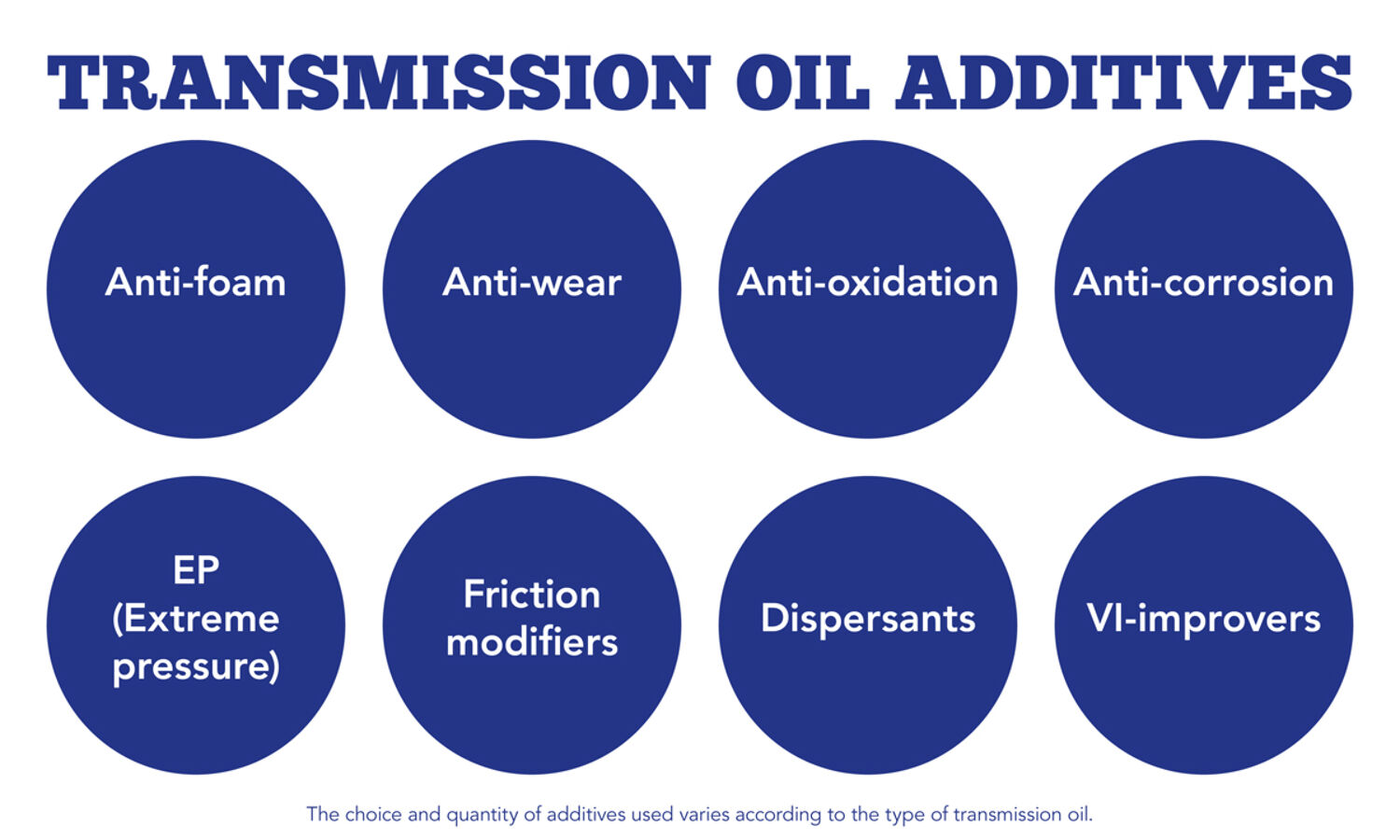
The Importance of TBN
TBN indicates the acid-neutralising capacity of an oil. Essential when using sulphur-rich fuel and under heavy-duty conditions, to protect against corrosion and wear.
August 18, 2020

The manual gearbox has been the most commonly used form of transmission for decades, particularly in Europe. Innovations have not stopped: transmissions can now handle increasingly higher torque and work more efficiently. In recent years, new materials such as molybdenum and carbon fiber have been introduced into transmissions, leading to longer lifespans, improved quality of gear changes, and fuel savings.
Automatic transmissions are also becoming increasingly popular and efficient. Specifically, CVT (Continuously Variable Transmission) and DCT (Dual Clutch Transmission) variants have gained a larger market share. In addition to the fact that the driver does not have to engage the clutch and change gears, these more complex transmissions often offer fuel-saving properties compared to manual gearboxes. Conventional automatic transmissions are also becoming more advanced. Not only in control (from hydraulic to electronic), but also with an increasing number of gears: 8- and 9-speed gearboxes are increasingly common, and even 10-speed automatics are now available.
While transmissions with more gears often require more space, minimizing the size of the gearbox is also an important development, particularly for automatic transmissions. This is to equip smaller and lighter vehicles with fuel-saving transmissions. These smaller sumps result in higher temperatures, presenting a greater challenge for the lubricants used. In achieving fuel savings, smooth gear changes, and a longer lifespan, transmission oil plays a prominent role. To achieve optimal performance, interesting trends can be seen in the development of transmission oils: lower viscosities, advanced additive technology, and covering a wide range of specifications.
In a previous article, we looked at the development of ever-thinner engine oils. The trend towards the use of low-viscosity lubricants to save fuel is also evident in the field of transmission oils, such as in the development of manual transmission fluids (MTFs) 75W-80 and 75W. These thinner oils can also dissipate heat in the transmission more quickly. This trend is also visible for automatic gearboxes. The most modern automatic transmission fluids (ATFs), such as Eurol ATF 6700 and ATF 7400, are considerably thinner than traditional ATFs. This trend towards low-viscosity oils is also ongoing for CVTs and DCTs. To optimize transmission performance and prevent wear, it is essential that the transmission oil offers adequate protection, even at low viscosities and high temperatures.
To offer optimal protection, transmission oil contains various additives. Think of anti-oxidation, anti-foam, anti-corrosion, and anti-wear additives, EP (Extreme Pressure) additives, viscosity improvers, friction modifiers, and dispersants. The choice and quantity of additives used vary depending on the type of transmission oil.

With the evolving transmissions, the additive formulation is also becoming increasingly advanced. To ensure optimal friction of ATF (Automatic Transmission Fluid) under all conditions, friction modifiers are taking on a more prominent role. In these types of complex transmissions, which sometimes have up to 10 gears, it is crucial for the driver to shift smoothly and without vibration.
As manual transmissions can handle ever-increasing torques and operate more efficiently, this type of transmission faces greater challenges than before. For modern MTFs (Manual Transmission Fluids), the EP (Extreme Pressure) additive, which reduces wear on the transmission even under higher loads, is taking on an increasingly important role.
In addition to searching for the optimal composition of additives, there is an increase in the use of synthetic base oils. This aims to ensure that the transmission oil retains its properties under a wide range of temperature and usage conditions, even with longer oil change intervals.
Whereas API GL-4 used to be the standard specification for MTFs (Manual Transmission Fluids), increasingly more OEM specifications are being prescribed nowadays. The number of specifications for ATFs (Automatic Transmission Fluids) even runs into the hundreds. This has led to the development of transmission oils that cover a wide range of specifications. Although MTFs are less universal, various ATFs exist with a very broad specification range. This means that one type of transmission oil is suitable for different types of vehicles, such as the Eurol ATF 1100 and Eurol ATF 6700 for automatic transmissions.
It is important to choose the right transmission oil that meets OEM recommendations and therefore complies with the prescribed specifications and viscosity. It is also crucial to change the transmission oil according to factory instructions.
For quick and easy flushing of automatic transmissions, Eurol offers the ATF Flush machine. Wondering which transmission oil is suitable for your vehicle? Then consult our Oil Advisor.
Automatic transmissions are expected to increasingly conquer the market, partly due to the growing popularity of hybrid vehicles. DCTs (Dual Clutch Transmissions) and CVTs (Continuously Variable Transmissions) will play a significant role in achieving fuel savings. The application of DCTs and CVTs is also being explored for electric vehicles. With the further development of transmission systems, the importance of the right lubricant becomes increasingly significant. The compatibility with new materials and the conductivity of the transmission oil in hybrid cars are crucial for continuing to provide optimal protection under all conditions.
From our Research & Development Center, our engineers are continuously engaged in the development and improvement of products and technologies. We closely follow innovations in the market to give our transmission oils the right properties for optimal performance.

TBN indicates the acid-neutralising capacity of an oil. Essential when using sulphur-rich fuel and under heavy-duty conditions, to protect against corrosion and wear.

Extreme conditions in mining cause wear and downtime. Eurol offers solutions to improve the lifespan and efficiency of machinery.

What does a coolant actually do, what are the differences between technologies, and what properties do they have? Why is it no longer possible to make a choice based on the...

Only the best lubricants are good enough for the toughest rally in the world. Curious to find out which Eurol lubricants are used in the Riwald Dakar hybrid truck? Then rea...

TBN indicates the acid-neutralising capacity of an oil. Essential when using sulphur-rich fuel and under heavy-duty conditions, to protect against corrosion and wear.

Extreme conditions in mining cause wear and downtime. Eurol offers solutions to improve the lifespan and efficiency of machinery.

What does a coolant actually do, what are the differences between technologies, and what properties do they have? Why is it no longer possible to make a choice based on the...

Only the best lubricants are good enough for the toughest rally in the world. Curious to find out which Eurol lubricants are used in the Riwald Dakar hybrid truck? Then rea...
